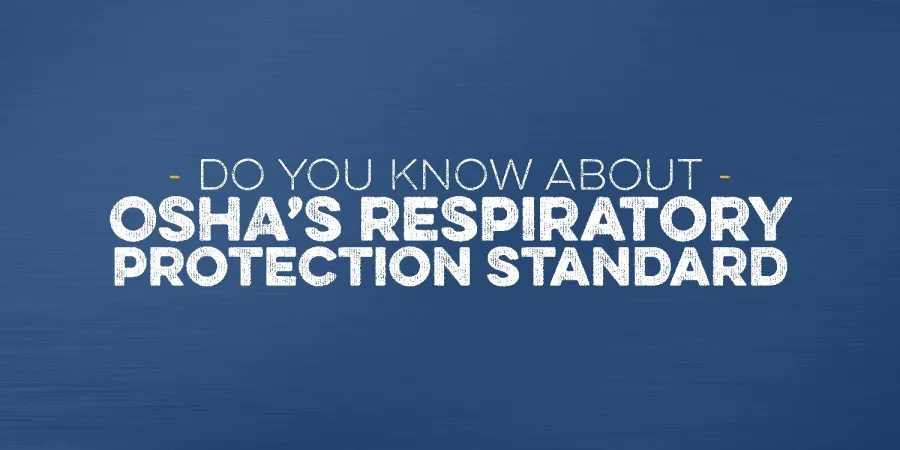The OSHA respiratory protection standard

OSHA enacted a respiratory protection standard in 1998, outlining employer responsibilities and worker's rights against respiratory hazards.
In 1998, the Occupational Safety and Health Administration (OSHA) enacted a respiratory protection standard which outlines employer responsibilities and worker’s rights regarding protection against respiratory hazards in the workplace.
Respirators are used in a wide variety of industries when airborne hazards cannot be removed. Remember! Personal Protective Equipment (PPE) should be the last line of defense against a hazard. Respirators should be used when the hazard cannot be eliminated by other controls.
The OSHA Respiratory Protection Standard explicitly states that “when effective engineering controls are not feasible, or while they are being instituted, appropriate respirators shall be used” [1910.134(a)(1)].
Under the standard, employers are required to:
- regularly evaluate workplace hazards and the respiratory protection program.
- provide respirators and ensure they are the correct size.
- ensure respiratory equipment is in proper working condition.
- maintain current training, fit testing and medical evaluations for workers.
- provide adequate time and facilities for proper use and storage.
There are many types of respirators used in occupational settings. The type of respirator used depends on a variety of factors including, but not limited to, the type(s) of contaminant(s) present, the toxicity and concentration of the contaminant(s) present, and the duration of exposure to the hazardous atmosphere. Regardless of the type of respirator selected, all respirators used in the workplace must be certified by the National Institute for Occupational Safety and Health (NIOSH). Common types of respirators used in the workplace include:
- Air Purifying Respirators (APRs)
- Filtering Facepiece Respirators
- Half Facepiece Respirators
- Full Facepiece Respirators
- Powered Air Purifying Respirators (PAPRs)
- Self-Contained Breathing Apparatus (SCBA)
Know your rights! Wearing a respirator may be a hazard in and of itself if a worker has not been properly fit tested, medically evaluated and trained on how to use the provided respirator.
Your employer is required to provide a workplace free from serious recognized hazards and comply with standards, rules and regulations issued under the OSH Act. Workers have the right to report unsafe and hazardous conditions in the workplace. Remember to document unsafe or hazardous conditions that you see or report.